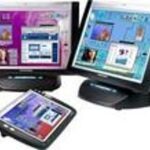If you have ever looked into buying a new car stereo system, you probably realize that the costs
of having it professionally installed can almost double the cost of your new system. But there is
always the other option: do it yourself. While a car stereo installation can be complicated, there
is nothing in particular that prevents you from doing it yourself, as long as you are willing to put
in the time and effort to learn how before you diving into the project. Not only can you learn a lot,
but there is always a sense of satisfaction when you fire it up for the first time, knowing you did it
all yourself.
Patience and caution are paramount here. Some car stereo equipment is quite expensive, not to
mention the price of your car to begin with! So be careful, proceed slowly, and if you have
doubts, find out the answer to whatever is bothering you before you continue. Not taking it slow
and carefully can lead to a botched install or even broken equipment or a damaged vehicle.
Beginners are advised to keep it simple the first time around. Don’t try to install a full car theater
system with LCD displays and DVD players or video games for your first installation. Start with
the head unit. This is both the easiest and the most critical thing to get right the first time. Often
the wiring harness that plugs into your factory stereo will need an adapter to get the correct
electrical connections to the power and speaker system already in your car. And being able to
reuse your factory wiring makes things much easier down the road when replacing the factory
speakers. Don’t just cut the harness off! Use an adapter. If you ever want to replace the head
unit again, things will be much easier if you can simply unplug the old adapter and replace it
with a new one for the new head unit.
The head unit will also probably require an adapter kit of some kind to fit properly in the factory
dash hole. Most factory systems are either custom or what is called “Double DIN”, whereas
most aftermarket head units are single DIN form factor. Sometimes, filing away parts of the trim
surrounding the mounting area will be needed. Do some test fits before you bolt everything down.
Speakers are a very important part of any quality audio system. While you may be able to get
sound from your factory speakers with that new head unit, replacing those factory speakers with
high quality aftermarket ones can make a huge difference in the quality of your sound.
For your first speaker installations, you should try to replace the speakers in the factory
mounting holes. This is a fairly simple procedure, but can require removing interior panels to
access the speaker mounting locations. This method is advantageous because you can use the
existing brackets and wiring.
More complicated is mounting speakers in locations that didn’t originally have speakers, or
putting larger speakers in existing mounting locations. This will often require metalworking and
building boxes and baffles to accommodate the new speakers. But if you don’t have any factory
speakers, or they are in bad locations, this may be your only option. Just be careful, and if the
project requires a lot of reshaping of the cars metal locations, you should consider having it
professionally done; this kind of work is best done with specific tools that most home
enthusiasts don’t have. such as plasma cutters and pneumatic sheet metal formers.




